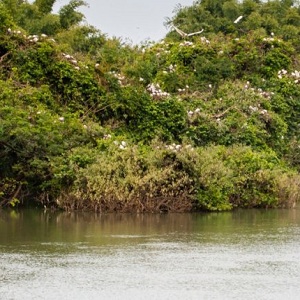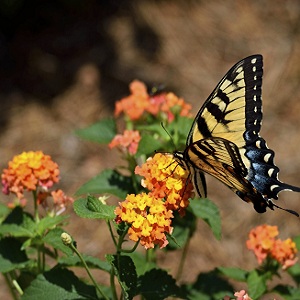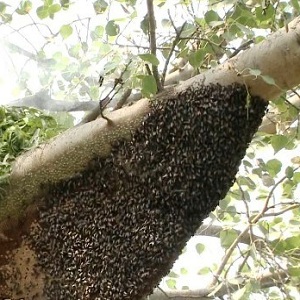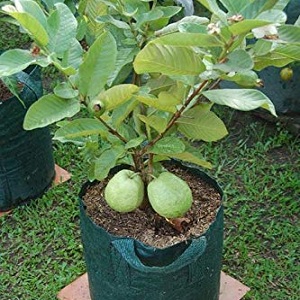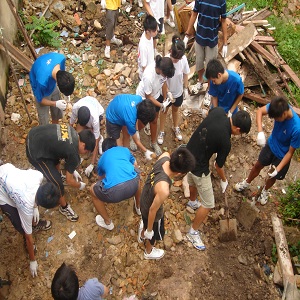Indirect Sightings of Animals Recorded in River Transect Walk
S.No. |
Name of the Species |
Indirect Evidence |
Encounter Rate/km |
% Encounter Rate |
|---|---|---|---|---|
| 1 | Tiger (Panthera tigris) | 7 | 0.2 | 2.4 |
| 2 | Leopard (Panthera pardus) | 5 | 0.1 | 1.7 |
| 3 | Sloth Bear (Melursus ursinus) | 10 | 0.2 | 3.4 |
| 4 | Wild Dog or Dhole (Cuon alpinus) | 4 | 0.1 | 1.4 |
| 5 | Striped Hyena (Hyena hyena) | 2 | 0.0 | 0.7 |
| 6 | Chital (Axis axis) | 70 | 1.5 | 23.8 |
| 7 | Sambar (Rusa unicolor) | 26 | 0.6 | 8.8 |
| 8 | Blackbuck (Antilope cervicapra) | 2 | 0.0 | 0.7 |
| 9 | Black-naped Hare (Lepus nigricollis) | 3 | 0.1 | 1.0 |
| 10 | Asiatic Elephant (Elephas maximus) | 101 | 2.2 | 34.4 |
| 11 | Gaur (Bos gaurus) | 5 | 0.1 | 1.7 |
| 12 | Feral Buffalo (Bubalus sp.) | 12 | 0.3 | 4.1 |
| 13 | Wild Pig (Sus scrofa) | 6 | 0.1 | 2.0 |
| 14 | Indian Porcupine (Hystrix indica) | 17 | 0.4 | 5.8 |
| 15 | Bonnet Macaque (Macaca radiata) | 3 | 0.1 | 1.0 |
| 16 | Oriental Small-clawed Otter (Aonyx cinerea) | 6 | 0.1 | 2.0 |
| 17 | Bengal Monitor Lizard (Varanus bengalensis) | 1 | 0 | 0.3 |
| 18 | Marsh Crocodile (Crocodylus palustris) | 14 | 0.3 | 4.8 |
Direct Sightings of Animals Recorded in River Transect Walk
S.No. |
Name of the Species |
# sightings |
# individuals |
Mean group size |
Encounter Rate/km |
|---|---|---|---|---|---|
| 1 | Chital (Axis axis) | 9 | 110 | 12.2 | 2.39 |
| 2 | Sambar (Rusa unicolor) | 3 | 6 | 2 | 0.13 |
| 3 | Blackbuck (Antilope cervicapra) | 3 | 6 | 2 | 0.13 |
| 4 | Asiatic elephant (Elephas maximus) | 3 | 11 | 3.7 | 0.24 |
| 5 | Gaur (Bos gaurus) | 3 | 8 | 2.7 | 0.17 |
| 6 | Feral Buffalo (Bubalus sp.) | 4 | 37 | 9.25 | 0.81 |
| 7 | Wildpig (Sus scrofa) | 2 | 3 | 1.5 | 0.07 |
| 8 | Bonnet Macaque (Macaca radiata) | 12 | 86 | 7.17 | 1.87 |
| 9 | Tufted Gray langur (Semnopithecus priam) | 13 | 159 | 12.23 | 3.46 |
| 10 | Indian Giant Squirrel (Ratufa indica) | 6 | 7 | 1.17 | 0.15 |
| 11 | Oriental small-clawed otter (Aonyx cinerea) | 1 | 2 | 2 | 0.04 |
| 12 | Bengal Monitor Lizard (Varanus bengalensis) | 3 | 3 | 1 | 0.07 |
| 13 | Marsh Crocodile (Crocodylus palustris) | 10 | 14 | 1.4 | 0.30 |
| 14 | Indian Rock Python (Python molurus molurus) | 1 | 1 | 1 | 0.02 |
List of Riparian Plants Found Along River Moyar
S.No. |
Family |
Species |
Habit |
Nativity |
|---|---|---|---|---|
| 1 | Combretaceae | Terminalia cuneata Roxb | Tree | Native |
| 2 | Fabaceae | Pongamia pinnata (L.) Pierre | Tree | Native |
| 3 | Myrtaceae | Syzygium cumini (L.) Skeels | Tree | Native |
| 4 | Ebenaceae | Diospyros malabarica (Desr.) Kostel. | Tree | Native |
| 5 | Euphorbiaceae | Homonoia riparia Lour. | Shrub | Native |
| 6 | Sapotaceae | Madhuca neriifolia (Moon) H.J. Lam. | Tree | Native |
| 7 | Euphorbiaceae | Trewia nudiflora L. | Tree | Native |
| 8 | Anacardiaceae | Mangifera indica L. | Tree | Native |
| 9 | Melastomataceae | Memecylon umbellatum Burm. | Tree | Native |
| 10 | Poaceae | Bambusa bambos Voss | Tree | Native |
| 11 | Rubiaceae | Ixora pavetta Andr. | Tree | Native |
| 12 | Lythraceae | Lagerstroemia microcarpa Wight | Tree | Native |
| 13 | Meliaceae | Azadirachta indica A. Juss. | Tree | Burma |
| 14 | Caesalpiniaceae | Bauhinia racemosa Lam. | Tree | Native |
| 15 | Sapindaceae | Schleichera oleosa (Lour.) Oken | Tree | Native |
| 16 | Rubiaceae | Canthium coromandelicum (Burm. F.) Alston | Shrub | Native |
| 17 | Meliaceae | Aglaia elaeagnoidea (Juss.) Benth. | Tree | Native |
| 18 | Celastraceae | Pleurostylia opposita (Wall.) Alston | Tree | Native |
| 19 | Celastraceae | Cassine glauca (Rottb.) Kuntze | Tree | Native |
| 20 | Bignoniaceae | Stereospermum colais (Buch.-Ham. ex Dillw.) Mabb. | Tree | Native |
| 21 | Rhamnaceae | Ziziphus mauritiana Lam. | Tree | Native |
| 22 | Salicaceae | Salix tetrasperma Roxb. | Tree | Native |
| 23 | Loganiaceae | Strychnos nux-vomica L. | Tree | Native |
| 24 | Rubiaceae | Pavetta indica L. ex K. Schum. | Shrub | Native |
| 25 | Verbenaceae | Vitex leucoxylon L.f. | Tree | Native |
| 26 | Fabaceae | Dalbergia latifolia Roxb. | Tree | Native |
| 27 | Solanaceae | Datura sanguinea Ruiz & Pavon | Shrub | Tropical America |
| 28 | Rubiaceae | Mitragyna parvifolia (Roxb.) Korth. | Tree | Native |
| 29 | Euphorbiaceae | Phyllanthus polyphyllus Willd. | Tree | Native |
| 30 | Verbenaceae | Vitex altissima L.f. | Tree | Native |
| 31 | Euphorbiaceae | Drypetes roxburghii (Wall.) Hurusawa | Tree | Native |
| 32 | Caprifoliaceae | Viburnum punctatum Buch. - Ham. ex D. Don | Liane | Native |
| 33 | Tiliaceae | Grewia tiliifolia Vahl. | Tree | Native |
| 34 | Mimosaceae | Prosopis juliflora (Sw.) Dc. | Tree | Tropical America |
| 35 | Myrtaceae | Psidium guajava L. | Tree | Native |
| 36 | Rhamnaceae | Ziziphus oenoplia (L.) Mill. | Liane | Native |
| 37 | Combretaceae | Terminalia elliptica Willd. | Tree | Native |
| 38 | Boraginaceae | Cordia monoica Roxb. | Tree | Native |
| 39 | Rutaceae | Glycosmis mauritiana (Lam.) Tanaka | Shrub | Native |
| 40 | Caesalpiniaceae | Tamarindus indica L. | Tree | Tropical Africa |
| 41 | Ulmaceae | Celtis timorensis Spanoghe | Tree | Native |
| 42 | Melastomataceae | Memecylon grande Retz. | Tree | Native |
| 43 | Rutaceae | Atalantia monophylla (L.) Correa | Tree | Native |
| 44 | Euphorbiaceae | Jatropha curcas L. | Shrub | Tropical America |
| 45 | Caesalpiniaceae | Cassia fistula L. | Tree | Native |
| 46 | Rubiaceae | Psydrax dicoccos Gaertn. | Tree | Native |
| 47 | Oleaceae | Olea dioica Roxb. | Tree | Native |
| 48 | Rutaceae | Pleiospermium alatum Swingle | Tree | Native |
| 49 | Euphorbiaceae | Bischofia javanica Blume | Tree | Native |
| 50 | Moraceae | Ficus microcarpa L.f. | Tree | Native |
| 51 | Sapotaceae | Mimusops elengi L. | Tree | Native |
| 52 | Meliaceae | Cipadessa baccifera (Roth) Miq. | Tree | Native |
| 53 | Mimosaceae | Entada pursaetha DC. | Liane | Native |
| 54 | Verbenaceae | Lantana camara L. | Shrub | Tropical America |
| 55 | Tiliaceae | Grewia serrulata DC. | Tree | Native |
| 56 | Burseraceae | Garuga pinnata Roxb. | Tree | Native |
| 57 | Verbenaceae | Premna latifolia Rozb. var. latifolia | Tree | Native |
| 58 | Bignoniaceae | Radermachera xylocarpa (Roxb.) K.Schum. | Tree | Native |
| 59 | Euphorbiaceae | Phyllanthus emblica L. | Tree | Native |
| 60 | Dipterocarpaceae | Shorea roxburghii G. Don. | Tree | Native |
| 61 | Moraceae | Ficus hispida L.f. | Tree | Native |
| 62 | Caesalpiniaceae | Cassia spectabilis DC. | Tree | Tropical America |
| 63 | Salvadoraceae | Salvadora persica L. | Tree | Native |
| 64 | Euphorbiaceae | Aporosa acuminata Thw. | Tree | Native |
| 65 | Rubiaceae | Catunaregam spinosa (Thunb.) Tirvengadum | Tree | Native |
| 66 | Loganiaceae | Strychnos potatorum L. | Tree | Native |
| 67 | Combretaceae | Combretum albidum G. Don | Liane | Native |
| 68 | Fabaceae | Dalbergia paniculata Roxb. | Tree | Native |
| 69 | Ebenaceae | Diospyros montana Roxb. | Tree | Native |
| 70 | Rhamnaceae | Ziziphus xylopyrus (Retz.) Willd. | Tree | Native |
| 71 | Sapindaceae | Sapindus emarginatus Vahl | Tree | Native |
| 72 | Caesalpiniaceae | Senna occidentalis (L.) Link | Shrub | Tropical America |
| 73 | Euphorbiaceae | Breynia vitis-idaea (Burm.f.) Fischer | Shrub | Native |
| 74 | Meliaceae | Walsura trifolia (A. Juss.) Harms | Tree | Native |
| 75 | Erythroxylaceae | Erythroxylum monogynum Roxb. | Tree | Native |
| 76 | Sapindaceae | Filicium decipiens (Wight & Arn.) Thw. | Tree | Native |
| 77 | Verbenaceae | Tectona grandis L.f. | Tree | Native |
| 78 | Combretaceae | Anogeissus latifolia (Roxb. Ex DC.) Wall | Tree | Native |
| 79 | Caesalpiniaceae | Senna didymobotrya (Fresn.) Irwin & Barneby | Shrub | Non Native |
| 80 | Smilacaceae | Smilax zeylanica L. | Shrub | Native |
| 81 | Rutaceae | Chloroxylon swietenia DC. | Tree | Native |
| 82 | Boraginaceae | Cordia obliqua Willd. | Tree | Native |
| 83 | Sterculiaceae | Helicteres isora L.ShrubNative | ||
| 84 | Hernandiaceae | Gyrocarpus asiaticus Willd. | Tree | Native |
| 85 | Combretaceae | Terminalia bellirica (Gaertn.) Roxb. | Tree | Native |
| 86 | Apocynaceae | Carissa carandas L. | Shrub | Native |
| 87 | Celastraceae | Maytenus heyneana (Roth) Raju & Babu | Shrub | Native |
| 88 | Simaroubaceae | Ailanthus excelsa Roxb. | Tree | Native |
| 89 | Euphorbiaceae | Phyllanthus reticulatus Poir. | Shrub | Native |
| 90 | Rubiaceae | Psilanthus wightianus (Wight & Arn.) J. Leroy | Shrub | Native |
| 91 | Myrtaceae | Syzygium tamilnadensis Rathakr. & Chithra | Tree | Native |
| 92 | Mimosaceae | Albizia lebbeck (L.) Willd. | Tree | Native |
| 93 | Bixaceae | Bixa orellana L. | Tree | Tropical America |
| 94 | Euphorbiaceae | Glochidion zeylanicum (Gaertn.) Juss. | Tree | Native |
| 95 | Ulmaceae | Trema orientalis (L.) Blume | Tree | Native |
| 96 | Moraceae | Ficus benjamina L. | Tree | Malaysian |
| 97 | Myrsinaceae | Ardisia solanacea Roxb. | Tree | Native |
| 98 | Bignoniaceae | Dolichandrone atrovirens Sprague | Tree | Native |
| 99 | Moraceae | Ficus benghalensis L. | Tree | Native |
| 100 | Euphorbiaceae | Ricinus communis L. | Shrub | Tropical America |
| 101 | Moraceae | Ficus tsjahela Burm.f. | Tree | Native |
| 102 | Fabaceae | Derris scandens (Roxb.) Benth | Liane | Native |
| 103 | Meliaceae | Swietenia mahagoni (L.) Jacq. | Tree | Native |
| 104 | Mimosaceae | Albizia amara (Roxb.) Boivin | Tree | Native |
| 105 | Burseraceae | Commiphora caudata (Wight & Arn.) Engler | Tree | Native |
| 106 | Caesalpiniaceae | Delonix regia (Boj. ex Hook) Rafin. | Tree | South East Asia |
| 107 | Ebenaceae | Diospyros ferrea (Willd.) Bakh. | Shrub | Native |
| 108 | Moraceae | Ficus mollis Vahl | Tree | Native |
| 109 | Euphorbiaceae | Givotia rottleriformis Griff. | Tree | Native |
| 110 | Tiliaceae | Grewia hirsuta Vahl. | Shrub | Native |
| 111 | Olacaceae | Olax scandens Roxb. | Liane | Native |
| 112 | Euphorbiaceae | Bridelia crenulata Roxb. | Tree | Native |
| 113 | Poaceae | Dendrocalamus strictus (Roxb.) Nees | Shrub | Native |
| 114 | Fabaceae | Erythrina variegata L. | Tree | Native |
| 115 | Moringaceae | Moringa concanensis Nimmo ex Gibs. | Tree | Native |
| 116 | Rubiaceae | Wendlandia thyrsoidea (Schultes) Steud. | Shrub | Native |
| 117 | Rhamnaceae | Ziziphus glabrata Heyne ex Roth | Tree | Native |
| 118 | Mimosaceae | Acacia leucophloea (Roxb.) Willd. | Tree | Native |
| 119 | Alangiaceae | Alangium salvifolium (L.f.) Wang. | Tree | Native |
| 120 | Mimosaceae | Albizia saman (Jacq.) F.v. Muell. | Tree | Tropical America |
| 121 | Bignoniaceae | Dolichandrone arcuata (Wight) Clarke | Tree | Native |
| 122 | Bignoniaceae | Dolichandrone falcata (Wall.ex DC.) Seem. | Tree | Native |
| 123 | Moraceae | Ficus racemosa L. | Tree | Native |
| 124 | Flacourtiaceae | Flacourtia ramontchi L' Hér | Tree | Native |
| 125 | Lythraceae | Lawsonia inermis L. | Shrub | Native |
| 126 | Rubiaceae | Morinda pubescens J.E. Smith | Tree | Native |
| 127 | Pandanaceae | Pandanus odoratissimus L.f. | Shrub | Native |
| 128 | Euphorbiaceae | Phyllanthus indofischeri Bennet | Tree | Native |
| 129 | Anacardiaceae | Spondias pinnata (L.f.) Kurz | Tree | Native |
| 130 | Apocynaceae | Wrightia arborea (Dennst.) Mabberley | Tree | Native |
| 131 | Apocynaceae | Wrightia tinctoria (Roxb.) | Tree | Native |
Butterfly Attracting Trees & Bushes
- Ivory Wood: Wrightia tinctoria
- Star Cluster: Pentas lanceolata
- Indian Caper: Capparis sepiaria
- Aristolochia: Aristolochia bracteolata
- Cherry Pie: Heliotropium arborescens
- Pink snakeweed: Starchytarphata mutabilis
Nectar Yielding Trees and Bushes
Nectar yielding trees
- Red Silk Cotton: Bombax ceiba
- Flame of the forest: Butea monosperma
- Indian Coral Tree: Erythrina indica/verigata
- Erythrina: Erythrina suberosa
- Eryrhina: Erythrina stricta
- Bottle Brush: Callistemon lanceolatus
- Gliricidia: Gliricidia_sepium
- Indian Cork Tree: Millingtonia hortensis
- Badminton ball tree: Parkia biglandulosa
- Jacaranda: Jacaranda mimosifolia
- Tulip Tree: Spathodea campanulata
Nectar yielding bushes
- Erythrina: Erythrina crista-galli
- Tubular Hibiscus: Hibiscus rosa-sinensis
- East Indian Screw Tree: Helecteres isora
- Powder-puff: Calliandra haematocephala
- Orange Trumpet Flower: Tecoma smithii
- White Silk Cotton: Cochlospermum gossypium
- Scarlet-Sterculia: Firmiana colorata
- Scarlet bush: Hamelia patens
- Cup and Saucer Bush: Holmskioldea sanguinea
- Fire-Flame Bush: Woodfordia fruticosa
- Pink snakeweed: Stachytarpheta mutabilis
- Queen's Wreath: Petrea volubilis
Fruit Yielding Trees & Bushes
- Neem: Azadirachta indica
- Peepul: Ficus religiosa
- Ficus: Ficus recemosa
- Singapore Cherry / Jamaican Cherry: Muntingia calabura
- Paper mulberry: Broussonetia papyrifera
- Banyan: Ficus benghalensis
- Mulberry: Morus alba
- Jamun: Syzygium cumini
- Bastard's Sandle: Erythroxylum monogynum
- Indian Snow Berry: Securinega leucopyrus
Service Learning Project at Allimoyar
Date: Dec 9-23, 2010
Venue: Allimoyar Tribal Hamlet, Thengumarahada Village, Nilgiris.
Organisers: Arulagam and Coast-2-Coast, Singapore.
Target group: School Children and Village Youth.
Purpose: To spread environmental awareness, experimental learning and facilitate basic infrastructure.
Medium: Art, Music, Painting, Sports, personal interaction, tree planting, books and printed materials.
Arulagam conducted a 14-day Service Learning project along with Coast-2-Coast, Singapore at Allimoyar Tribal Hamlet, Thenghumarada Village, Nilgiris North Forest Division. The social service activity happened during December 09, 2010 – December 23, 2010 at Allimoyar situated in the banks of river Moyar in Nilgiris North Forest Division. Latitude and longitude for our project site is 11.56565N & 76.97541E and 11.55686N & 76.95135E. 13 Volunteers from Coast2Coast and equal number of volunteers from Arulagam jointly worked in various activities.
The following activities were conducted in the Allimoyar tribal hamlet:
- Painting of mural with environmental theme at Government Tribal Residential Middle School and village.
- Experiential learning and enrichment workshops (e.g. Science experiments)
- Art Demonstration in schools (Origami, an art from recycled materials & waste etc)
- Building of Library shelves and donation of books to the Allimoyar village
- Playground renovation work for youths
- Beautification of school building
Members of Coast-2-Coast organization set-up a library for not only the school, but also for the village. Playground was created as part of the programme and the school classroom walls were cleaned and painted. This resulted in the beautification of school. Not to mention, tree plantation was organized as part of the programme.
Apart from lectures on Indian History and Tribal people, Environment awareness was also provided to the participants with the help of the members of ARULAGAM during their 10-day stay in SWS. The team of XI spent first 10-days at Allimoyar village and the last 4-days were spent at east coast of India near Kanyakumari towards Mangrove plantation.
Please find the article about Mangrove plantation by Coast-2-coast volunteers in THE HINDU. (http://www.thehindu.com/todays-paper/tp-national/tp-tamilnadu/article1031360.ece)
{mosmap width='936'|height='400'|lat='11.554167'|lon='76.950110'|zoom='15'|mapType='Satellite'|text='Allimoyar Village, Nilgiris'|tooltip='DWO'|marker='1'|align='center'}
{rss uri=http://picasaweb.google.com/data/feed/base/user/115351421924720875854/albumid/5802932275688710001?alt=rss&kind=photo&hl=en_US limit=24}
Palm Juice Report
Project report Neera
Submitted to:
National Research and Development Corporation (NRDC)
Submitted by:
ARULAGAM
Introduction
ARULAGAM proposed to initiate “Value addition to Palm Juice" ( Neera) to sustain the livelihood of Palm workers and their families, with the aim of preserving, bottling and marketing the Palm juice using cost effective appropriate methods and technologies. This project was supported by National Research and Development Corporation (NRDC) with ` 1,00,000/ to undertake and implement the proposed plan with the active involvement of palm workers. The uncertain income from palm juice extracted from the trees, which should be processed and sold out within 4 hours because of that the palm juice will get fermented. In order to overcome the problems, preserving the palm juice using appropriate processing methods to keep the juice (Neera) for longer time in ensuring sustainable livelihood options of the families involved palm juice extraction work. ARULAGAM has adapted the following strategic approaches to make success of the project to be replicated and sustained for long term:
1. Selection of area for implementation
In and around Koviloor village in Dindigul district, where palm extraction works have been traditionally practiced by the palm workers, with whom ARULAGAM had established rapport and relationships with 40 palm extraction workers and made transparency on the project implementation for the future sustainability. The palm workers and women had rendered their cooperation and involvement in the proposed activities. During the season ( Usually January to June), every day 100 litres of Neera were collected from the palm juice extraction workers for processing and marketing, as the preliminary initiative.
Initiatives launched by ARULAGAM to make the process into successful one with the following activities:
• Identification of beneficiaries
• Rapport building and project orientation meeting with different stakeholders
• Purchase of materials and instruments
• Installation of instrument and worksite preparation
• Pilot phase activity with few beneficiary
• Selection of beneficiaries
• Organize training for product preparation
• Organize training for managing the activity
• Assess market options
• Market linkages & Cost-benefit analysis
• Rapport with various outlets
• Actual selling of NEERA and Follow up action
1. Preserving the Palm Juice
a) The white palm sap, at initial stages (when collected) does not ferment (non-alcoholic) and tastes very sweet.
b) As the time passes the sap get fermented, intoxicates and tastes sour.
c) The fermented liquid is known as 'Palm Wine' or Kallu (Tamil).
d) As the palm sap gets fermented very quickly, they apply lime on the surface of the pot as a preservative.
e) The lime prevents quick fermentation.
After extraction of palm juice from the trees, usually early in the morning, are collected from the individual palm workers and preservation measures had been adapted with the technical support and guidance rendered by Prof Dr. David Ravindran (Gandhigram rural University) and Mrs. Anbu Vakini( Nutrient Specialist ), to enhance the production and without changing the tastes and quality of the juice while marketing.
ARULAGAM has established one processing unit at the field where the proposed initiatives have to b launched in order to make easy accessibility to procure the extracted palm juice immediately after extraction and to process the juice in the field itself.
Steps involved in processing and preserving the extracted palm juice:
All the men and women of the Palm families involved in preserving of palm juice preservation using simple methods which are cost effective, with these methods, rate of decomposition of palm juice is minimized or arrested and enable the juice to keep for more than 2 to 40 days. The variances in retaining taste of preserved juice are affected by many factors such as tastes varies with pH of juice , trees, time of collection, location of trees, climatic conditions, applying lime etc. these are the factors we faced as problems. So we encountered the problems of storing the packed juice in days which varies from 2 -40 days. So ARURLAGAM team decides to market the products to understand their preference over the tastes and quality.
f) Packing and marketing of palm juice
In this way, the preserved Palm juice is marketed in the form of sealed bottles. On considering the costs of making tetra pack, ARULAGAM considers the bottles for re-use of the same in the coming months with frequency.
ARULAGAM marketed the bottled Palm juices in Dindigul and Karur with the support and encouragement of Khadi showrooms in Karur District and fruit juice shops in Dindigul District. During this period, we faced many hindrances in marketing the juice, as we are not that much expertise in marketing strategies. So, ARUALGAM arranged Palm Juice Introductory Functions both in Karur and Dindigul in which M.P. Gurusamy Economist, Mr. Krishnan, Secretary of Palm Worker’s Society, Environmentalist Mr. Pamayan , Politician Mr. Gopalakrishnan, noted Doctors and entrepreneurs participated and insisted on the need of using palm juice as a health drink with many nutrient values, instead of artificially flavoured beverages. This meeting helps to spread the message to reach the people. The program ends with the documentary film “ Open of Insight” which depicts the life of the blind palm worker involved in this work for years.
g) Lobbying with Government in Expanding marketing sources at the state level
Based on our experiences and encouragements in marketing the bottled palm juice in Dindigul and Karur regions, ARULAGAM decides to spread the methods throughout the state, and meet the Tamilnadu Khadi department officials at Kuralgam, Chennai where they appreciated the initiatives and render encouraging ideas. We also made an attempt to make powder from the palm juice and get succeeded to some extent with the help of Mr. Siddiq who is the Food processing in charge of the Gandhigram Trust , Dindigul.
At the time, we met Mr.Kumari Anandan, The Chairman of Tamilnadu Palmyrah Development Board, and other officials of Tamil Nadu Palm Products Development Board. He appreciated our initiatives and promised to promote the methods for the welfare and livelihood of palmyrah workers. He assured to recommend the method to the Tamilnadu Chief Minister Mr.M. karunanithi and discussed it. With keen interest, our Chief Minister has recently initiated a project for packaging Neera (padhaneer )in tetra-pack. The product will be marketed by Aavin, the milk cooperative. It is the success to our lobbying work to make changes in the lives of families involved in Palm juice extraction traditionally.
ARULAGAM is glad to note that on account of sustained effort of Arulagam and its effective lobbying with Palmyrah Development Board, the Government of Tamil Nadu has recently initiated a project for packaging Palm Juice in Tetra-pack and palm related products.
This is a great success story for Arulagam. We have fulfilled the mission of providing self-employment for the palm workers of Tamil Nadu.
h) Media coverage
All the programs on value-added palm juice have been spread through various dailies and magazines in Tamilnadu as news and articles ( enclosed as annexure) on the use of Bottled Palm juice to reach the people.
Future initiatives planned to be implemented by ARULAGAM
ARULAGAM plans to add value to Palm Juice ( Neera) with the production of the following products by involving the women of the Palmyra workers to empower and sustain their livelihoods throughout the year.
1. Formation of Palm worker family groups in terms of shareholding groups, that is every palm extraction family holds a share by supplying the extracted palm juice to the processing unit
2. The families will receive the amount for the juice supplied to the processing unit
3. The family members- women- involved in processing, preservation, packing and marketing the palm juice by exploring marketing outlets and sources with ARULAGAM.
4. Profit sharing to the shareholding family members ( usually during non-season period)
5. Promoting market outlet for the value-added products like Gur, Crystal sugar making, Palm candy production, other than palm juice marketing.
6. These strategies will enhance the livelihood options and ensure employment opportunities to the women throughout the year, especially during non- palm juice season ( July- December )
i) GUR
When Neera is converted into a solid or semi-solid crystalline mass it is called gur. It has got wide use as a sweetening agent in Indian village food products. Palm gur has a characteristic smell of its own.
ii) CRYSTAL SUGAR MAKING
The initial process of sugar making is practically the same as that of gur. In this case also, juice is de-limed, filtered and boiled. The juice when it reaches 110°C temperature is poured into the crystallizer.
iii) PALM CANDY
Like palm gur, palm candy has also its importance among the products of Neera. It is being produced and used since procuring sweet Neera from palmyra has been known. It has got its various uses in Ayurvedic medicinal preparation as well as direct use for thrist, Urine trouble and body heat, smallpox, and cough and cold
iv) Plant growth promoter
The unused Palm juice can be used as a plant growth promoter instead of chemical fertilizer.
Planting of Palm tree saplings
ARULAGAM is planned to plant 1 million palm seeds along the coastlines not only to promote palm cultivation in considering the sustainable livelihood options for the families involved in palm works but also to create a green belt along the coastlines to prevent the harmful effects of heavy flood waves and Tsunami.
Acknowledgment
On behalf of Arulagam sincerely thank to National Research and Development Corporation (NRDC) for their support services to undertake and implement the project into success and the following eminent personalities in promoting and sustaining lives of Palmyrah workers:
1. Honorable Tamilnadu Chief minister Mr. M. Karunanithi
2. Mr. Kumari Anandan, Former Member of Parliament and chairman, Tamilnadu Palmyra Development Board
3. Honorable Minister for Khadi
4. Mr. K. Ramachandran and officials of Khadi Industries.
5. Dr. David Ravindran of Gandhigram Rural University
6. Mrs. Anbuvahini, Nutrient specialist.
7. Mr. Siddique, Food processing unit, Gandhigram
Paper clipping
On
Bottled and Tetra pack
Palm juice
Tamilnadu Chief Minister announces
Tetra pack sale of Palm juice
Article in Magazine
On
Palm plating along high ways
Sowing Palm seeds
Kadhi’s statement on
Palm Juice in Tetra pack for 40 days
Planting Saplings of Palm along Coast line
Planting saplings of Palm in the villages
Pamphlet
on
Palm nut planting Function
Subcategories
Wildlife Article Count: 42
Vulture Conservation Article Count: 27
River Moyar Conservation Article Count: 6
Tiger Conservation Article Count: 3
Renewable Energy Article Count: 1
Petitions Article Count: 1
Publications Article Count: 1
Articles Article Count: 21
Community Article Count: 12
Nursery and Afforestation Article Count: 7
Coastal Conservation Article Count: 1
Page 10 of 13



